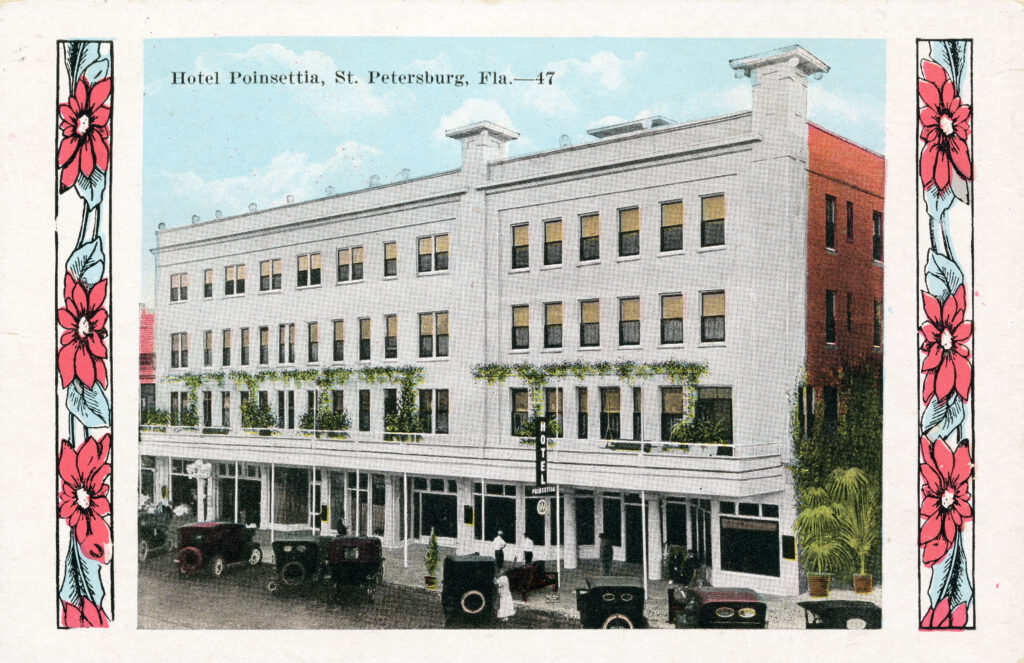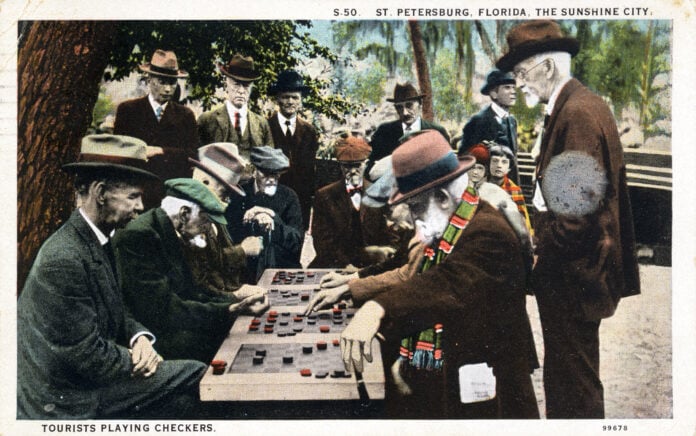How many American cities have been perfectly captured at a precise moment in their history by a gifted storyteller? There’s Hannibal, Mo., forever immortalized by Mark Twain in “The Adventures of Tom Sawyer,” and Monroeville, Ala., fictionalized as Maycomb by Harper Lee in “To Kill a Mockingbird.”
I would submit that we can add St. Petersburg to that list. The Sunshine City was memorialized in 1922 by Ring Lardner, considered by many to be one of the greatest American authors of the 20th century, in the classic short story “The Golden Honeymoon.” If you haven’t read it before, put down this magazine and Google it. There’s a free PDF online from the Library of America. I’ve read it a dozen times, and every time, I appreciate it more.
Lardner spent many winters at the Belleview Biltmore in Belleair, just north of St. Petersburg. He visited St. Petersburg at least once, when he came to hear Will Rogers entertain a sold-out audience at the Coliseum. Based on his precise depiction of the city, and his history of covering spring training baseball, he likely spent much more time here than that.
In “The Golden Honeymoon,” Lardner brings St. Petersburg’s boom years of the 1920s to life as he relays a story of a couple from Ohio celebrating their 50th wedding anniversary with a trip to Florida. Lardner’s use of vernacular, which differentiated him as a sportswriter and endeared him to the common American, was on clear display as he picked up on St. Pete’s nicknames and unique habits.
St. Pete is what folks calls the town, though they also call it the Sunshine City, as they claim they’s no other place in the country where they’s fewer days when Old Sol don’t smile down on Mother Earth, and one of the newspapers gives away all their copies free every day when the sun don’t shine.
During their trip, the couple bump into the wife’s former flame, and a tense, modern comedy of manners ensues. Where else but St. Petersburg might a person bump into a suitor of more than five decades ago? Only in St. Pete could the rivals compete for her affection through games of checkers, horseshoes, and cards, most of which they play at Williams Park, which served as the center of the city in 1922.
The second day we was there we visited the Park, which is a good deal like the one in Tampa, only bigger, and they’s more fun goes on here every day than you could shake a stick at. In the middle they’s a big bandstand and chairs for the folks to set and listen to the concerts, which they give you music for all tastes, from Dixie up to classical pieces like Hearts and Flowers. Then all around they’s places marked off for different sports and games – chess and checkers and dominoes for folks that enjoys those kind of games, and roque and horse-shoes for the nimbler ones. I used to pitch a pretty fair shoe myself, but ain’t done much of it in the last twenty years.

In setting the story in St. Petersburg, Lardner can place his aging couple in a city dedicated to their comfort, with endless diversions – from horseshoe pits and shuffleboard, to the city’s unique cafeteria culture, catering (literally) to his narrator’s love of a good cheap meal.
Our first business, of course, was to find a place to eat and after trying several places we run on to a cafeteria on Central Avenue that suited us up and down. We eat pretty near all our meals there and it averaged about two dollars per day for the two of us, but the food was well cooked and everything nice and clean. A man don’t mind paying the price if things is clean and well cooked.
On the wife’s birthday, they splurged for a special meal at the Poinsettia Hotel, a long-time institution in St. Pete, once at 460 Central Ave.
On the third day of February, which is Mother’s birthday, we spread ourselves and eat supper at the Poinsettia Hotel and they charged us seventy-five cents for a sirloin steak that wasn’t hardly big enough for one. I said to Mother: “Well,” I said, “I guess it’s a good thing every day ain’t your birthday or we would be in the poorhouse.” “No,” says Mother, “because if every day was my birthday, I would be old enough by this time to of been in my grave long ago.” You can’t get ahead of Mother.
Readers in Lardner’s time liked the columnist for his revealing pictures of middle-class America. He started as a sports journalist and grew into a prolific and popular columnist for the Saturday Evening Post and other periodicals. Lardner had an ear for the colloquialisms of middle America, and a knack for laugh-out-loud one-liners. Some critics have claimed that his readers didn’t realize he was making fun of the people he wrote about, and thereby, society at large.
Regardless of whether that’s the case, Lardner seems to show great affection for his subjects in “A Golden Honeymoon.’ His depiction of the quibbling and petty jealousies of a long-married couple reminds us that familiarity may breed contempt, but it also breeds a sense of protection, defensiveness, and deep love for one’s partner, as the reader sees when the couple makes up on one of the city’s green benches.
“The Golden Honeymoon” is a human story, one that has earned its place in practically every anthology of America’s best short stories. Its value to the lover of St. Petersburg history is even greater: it offers a picture of St. Pete at a specific time and place, warts and all. (The racism of the era is on clear display.) The story describes tourists visiting the Chamber of Commerce to register with their state societies, widows running the boarding houses, and older retirees enjoying their twilight years in the sunshine. PBS even made it into a TV movie, filmed here in 1984 to mixed success. (Round Lake is substituted for Williams Park, and the story loses a bit of the affection Lardner has for his characters, but it’s still a fun watch!) Altogether, “The Golden Honeymoon” is a reminder of the city we have evolved from, and the flawed but loving human beings we still are.
You can read The Golden Honeymoon here: https://storyoftheweek.loa.org/2016/02/the-golden-honeymoon.html



